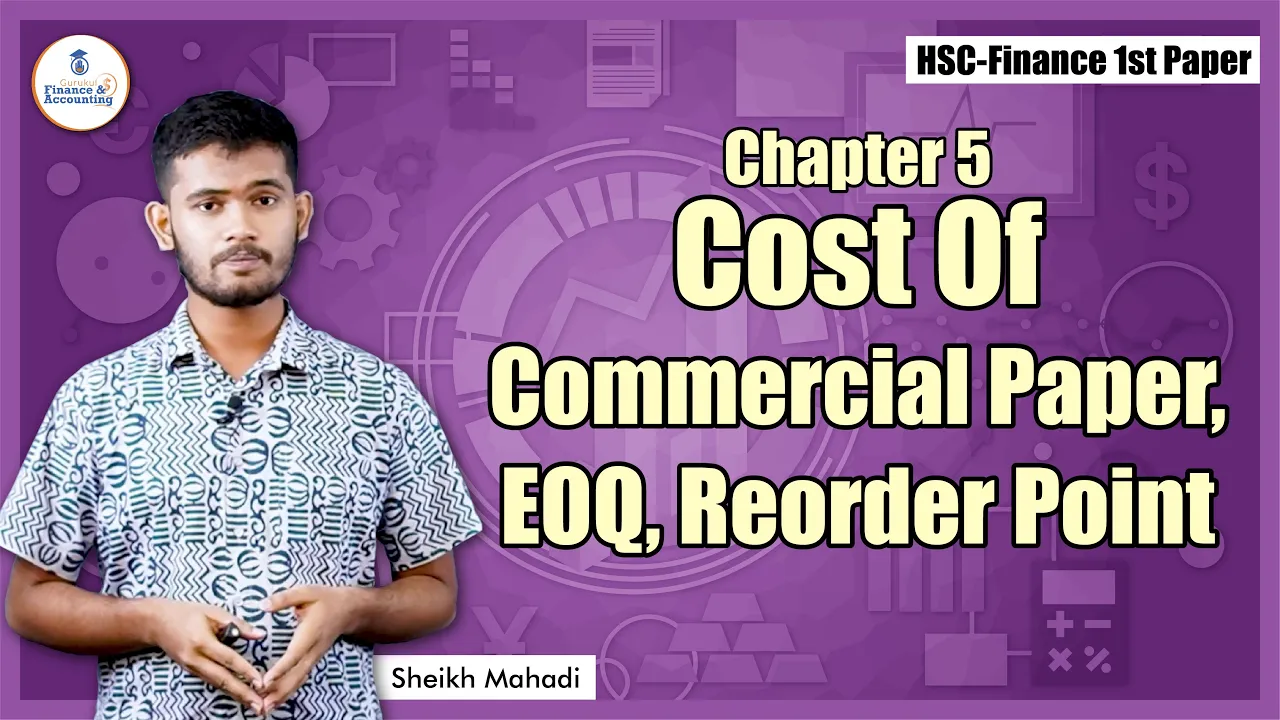Cost Of Commercial Paper, EOQ, Reorder Point class is for the HSC candidates or for the students of classes 11 and 12. This class is a part of HSC (11-12) [ এইচএসসি (১১-১২) ], Finance and Banking 1st paper. You can find it in the Finance 1st Paper, chapter 5, the topic name is “Cost Of Commercial Paper, EOQ, Reorder Point”. This class will help you in your upcoming HSC examination.
Cost Of Commercial Paper, EOQ, Reorder Point
What Is Commercial Paper?
Commercial paper is an unsecured, short-term debt instrument issued by corporations. It’s typically used to finance short-term liabilities such as payroll, accounts payable, and inventories. Commercial paper is usually issued at a discount from face value. It reflects prevailing market interest rates.
Commercial paper involves a specific amount of money that is to be repaid by a specific date. Minimum denominations are $100,000. Terms to maturity extend from one to 270 days. They average 30 days.

KEY TAKEAWAYS
- Commercial paper is a form of unsecured, short-term debt.
- It’s commonly issued by companies to finance their payrolls, payables, inventories, and other short-term liabilities.
- Maturities on commercial paper range from one to 270 days, with an average of around 30 days.
- Commercial paper is issued at a discount and matures at its face value.
- The minimum denomination of commercial paper is $100,000 and it pays a fixed rate of interest that fluctuates with the market.
Understanding Commercial Paper
Commercial paper was first introduced over 150 years ago when New York merchants began to sell their short-term obligations to dealers in order to access capital needed to cover near-term obligations. These dealers, or middlemen, purchased the paper, (also known as promissory notes) at a discount from their par value. They then sold the paper to banks and other investors. The merchants would repay the investors an amount equal to the par value of the note.3
Commercial paper is not backed by any form of collateral, making it unsecured debt. It differs from asset-backed commercial- paper (ABCP), a class of debt instrument backed by assets selected by the issuer. In either case, commercial -paper is only issued by firms with high ratings from credit rating agencies. These firms can easily find buyers without having to offer a substantial discount (at a higher cost to themselves) for the debt issue.

Trade Credit Trends
Trade credit is most rewarding for businesses that do not have a lot of financing options. In financial technology, new types of point of sale financing options are being provided for businesses to utilize in place of trade credits. Many of these fintech firms partner with sellers at the point of sale to provide 0% or low-interest financing on purchases. These partnerships help to alleviate trade credit risks for sellers while also supporting growth for buyers.
Trade credit has also brought about new financing solutions for sellers in the form of accounts receivable financing. Accounts receivable financing, also known as invoice financing or factoring, is a type of financing that provides businesses with capital in relation to their trade credit, accounts receivable balances.
From an international standpoint, trade credit is encouraged. The World Trade Organization reports that 80% to 90% of world trade is in some way reliant on trade finance.2 Trade finance insurance is also a part of many trade finance discussions globally with many new innovations. LiquidX for example now offers an electronic marketplace focused on trade credit insurance for global participants.
Research conducted by the U.S. Federal Reserve Banks also highlights some important insights. The 2022 Small Business Credit Survey finds that trade credit finance is the third most popular financing tool used by small businesses with 9% of businesses reporting that they utilize it.

Cost Of Commercial Paper, EOQ, Reorder Point details:
See more:
